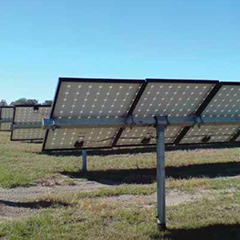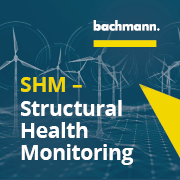Quality assurance is of fundamental importance for solar panels. The failure-free operation of the panels is a prerequisite for efficient power generation, long life, and a high return on the investment. To ensure this failure free operation a fast, simple and reliable method to evaluate a solar panel’s performance is required, both during the production process and after the panel has been installed…
The use of thermal imaging cameras for solar panel evaluation offers several advantages. Anomalies can clearly be seen on a crisp thermal image and – unlike most other methods – thermal cameras can be used to scan installed solar panels during normal operation. Finally, thermal cameras also allow to scan large areas within a short time frame.
In the field of research and development (R&D) thermal imaging cameras are already an established tool for the evaluation of solar cells and panels. For these sophisticated measurements, usually high performance cameras with cooled detectors are used under controlled laboratory conditions.
However, the use of thermal imaging cameras for solar panel evaluation is not restricted to the field of research. Uncooled thermal imaging cameras are currently being used more and more for solar panel quality controls before installation and regular predictive maintenance checkups after the panel has been installed. Because these affordable cameras are handheld and lightweight, they allow a very flexible use in the field.
With a thermal imaging camera, potential problem areas can be detected and repaired before actual problems or failures occur. But not every thermal imaging camera is suited for solar cell inspection, and there are some rules and guidelines that need to be followed in order to perform efficient inspections and to ensure that you draw correct conclusions. The examples in this article are based on photovoltaic modules with crystalline solar cells; however, the rules and guidelines are also applicable to the thermographic inspection of thin-film modules, as the basic concepts of thermography are the same.
Procedures for inspecting solar panels with thermal imaging cameras
During the development and production process, solar cells are triggered either electrically or by the use of flash lamps.
This ensures that there is sufficient thermal contrast for accurate thermographic measurements. This method cannot be applied when testing solar panels in the field, however, so the operator must ensure that there is a sufficient energy input by the sun. To achieve sufficient thermal contrast when inspecting solar cells in the field, a solar irradiance of 500 W/m2 or higher is needed.
For the maximum result a solar irradiance of 700 W/m2 is advisable. The solar irradiance describes the instantaneous power incident on a surface in units of kW/m2, which can be measured with either a pyranometer (for global solar irradiance) or a pyrheliometer (for direct solar irradiance). It strongly depends on location and local weather. Low outside temperatures may also increase thermal contrast.






















